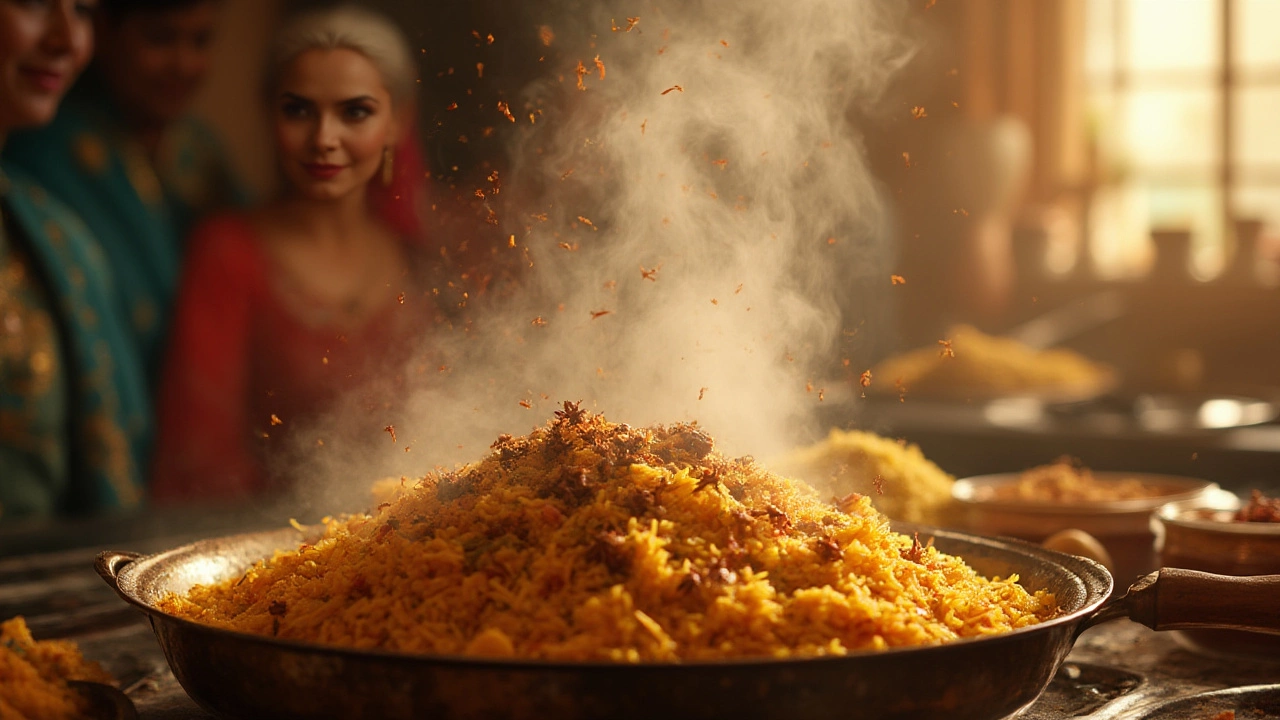Fragrance of Biryani – Unlocking the Aromas that Define India’s Iconic Dish
When we talk about fragrance of biryani, the captivating scent that rises from a pot of layered rice, meat, and spices. Also known as biryani aroma, this sensory cue tells you the dish is ready to wow the palate.
The magic starts with Basmati rice, long‑grain, fragrant rice that holds its shape and releases a subtle nutty smell when cooked. Pair it with garam masala, a blend of cardamom, cinnamon, cloves, and pepper that fuels the spice profile. Together they form the backbone of the fragrance of biryani. Adding a few fresh herbs like mint or cilantro, and a splash of ghee, amplifies the scent, turning a simple kitchen into a perfume lab.
Beyond ingredients, the cooking method is a key player. The dum technique, a sealed, slow‑cook method that traps steam and lets flavors meld, ensures every grain absorbs the spice oil. This technique requires proper sealing—traditionally with dough or a heavy lid—so the rising steam carries volatile oil molecules back into the rice. The result? A biryani whose perfume lingers even after the pot is opened. In fact, the fragrance of biryani encompasses aromatic spices, fragrant rice, and the pressure‑built steam of dum cooking.
Think about marinating the meat, too. A quick dip in yogurt, lemon juice, and a pinch of turmeric creates a tender base that releases its own scent during the dum phase. This mirrors our other posts about marinating mistakes and the power of acids in a glaze—same chemistry, different dish. When the meat sighs in its own juices, it adds depth to the overall aroma, just like a well‑balanced vinaigrette lifts a salad.
Temperature matters as much as the ingredients. Cooking the rice to 70 % doneness before layering prevents over‑cooking, preserving the rice's natural scent. Then, when the final steam burst hits, the ghee‑infused spices vaporize, flooding the kitchen with a warm, earthy perfume. This principle is similar to the quick tricks we share for instant dosa fermentation—both rely on controlled heat to unlock flavor molecules.
Regional twists also shape the fragrance. Hyderabadi biryani leans on fried onions and saffron, giving a sweet‑savory perfume, while Kolkata’s version adds boiled eggs and mustard oil for a sharper kick. Understanding these variations helps you decide which aromatics to prioritize for your own palate.
What to Expect Next
Below you’ll find a range of tips, from selecting the perfect rice to mastering the dum seal, plus troubleshooting tricks for common aroma‑related mishaps. Whether you’re a beginner or a seasoned home chef, these articles will guide you toward a biryani that smells as good as it tastes.
What Makes Biryani Smell Amazing? Unveiling the Secrets Behind Biryani Aroma
Discover what gives aroma to biryani—spices, rice, and secret ingredients. Uncover tips and fun facts about biryani’s heavenly scent. Dive into the science and culture behind biryani aroma.
Read more